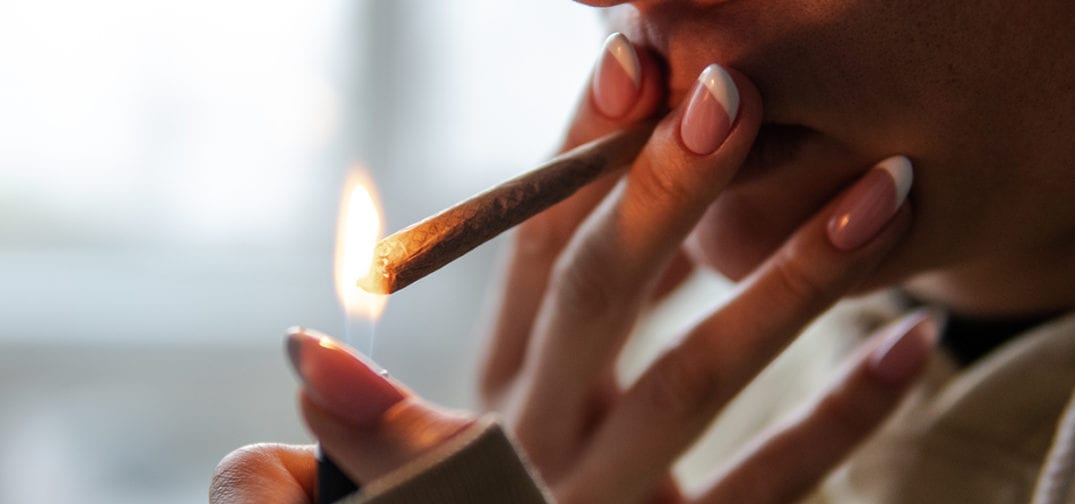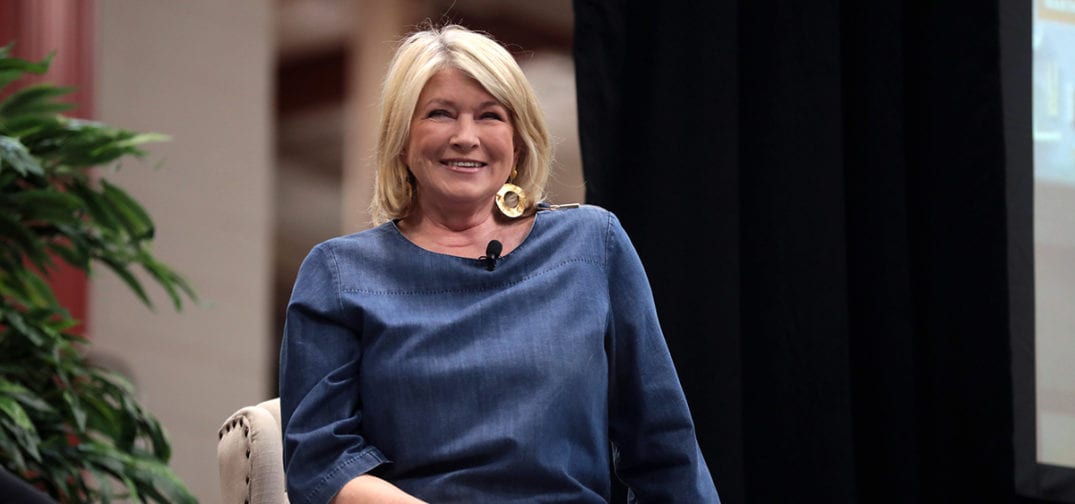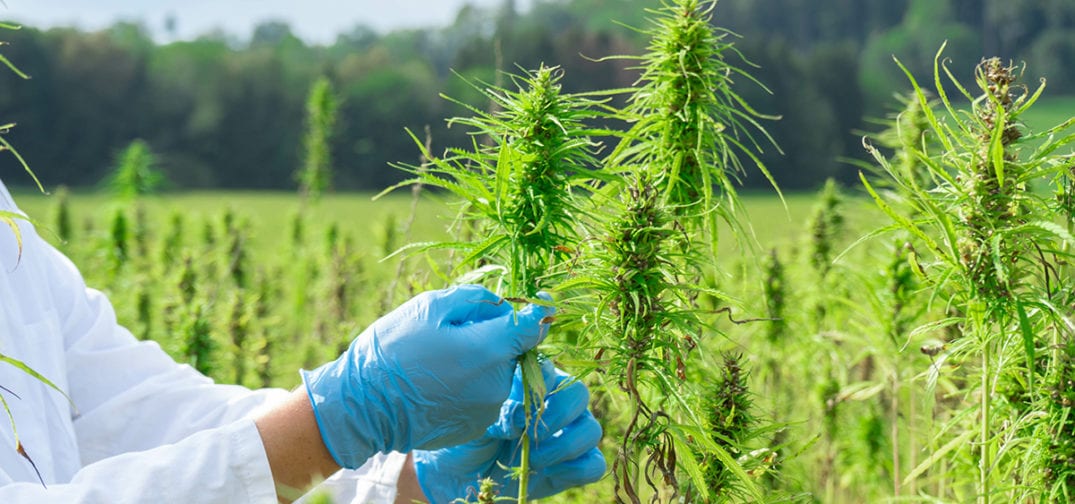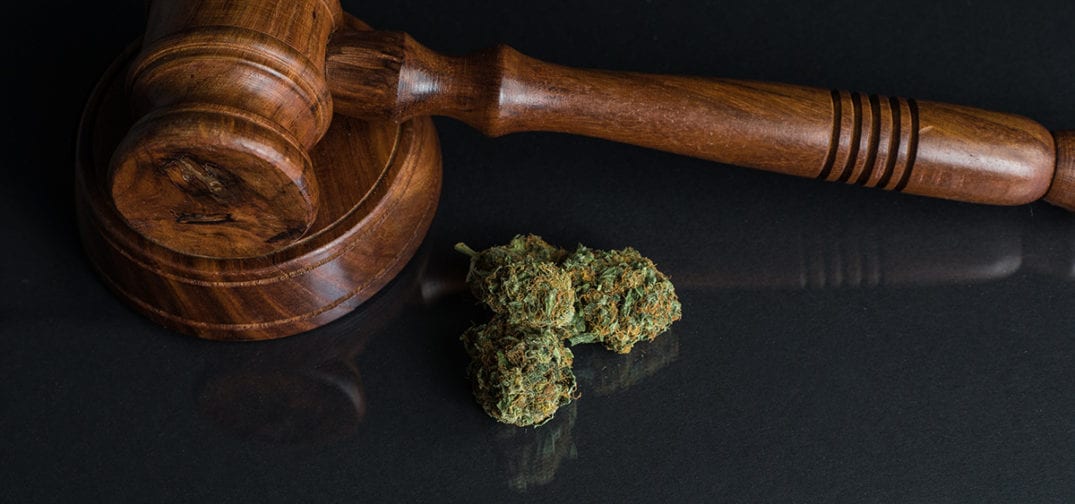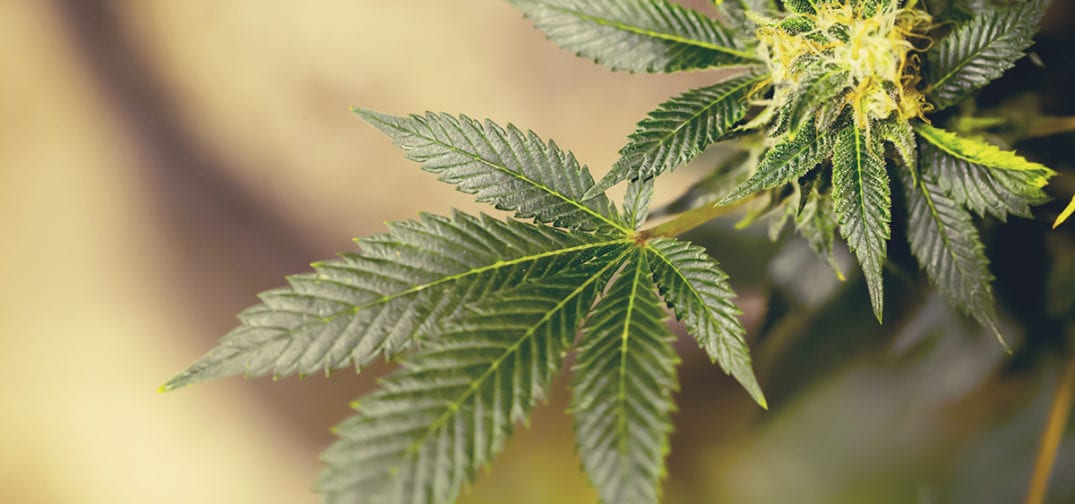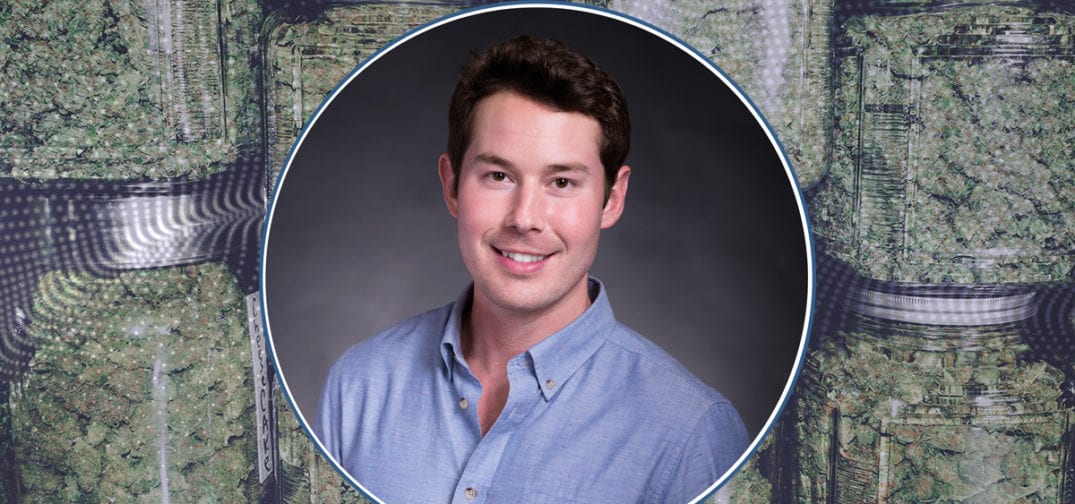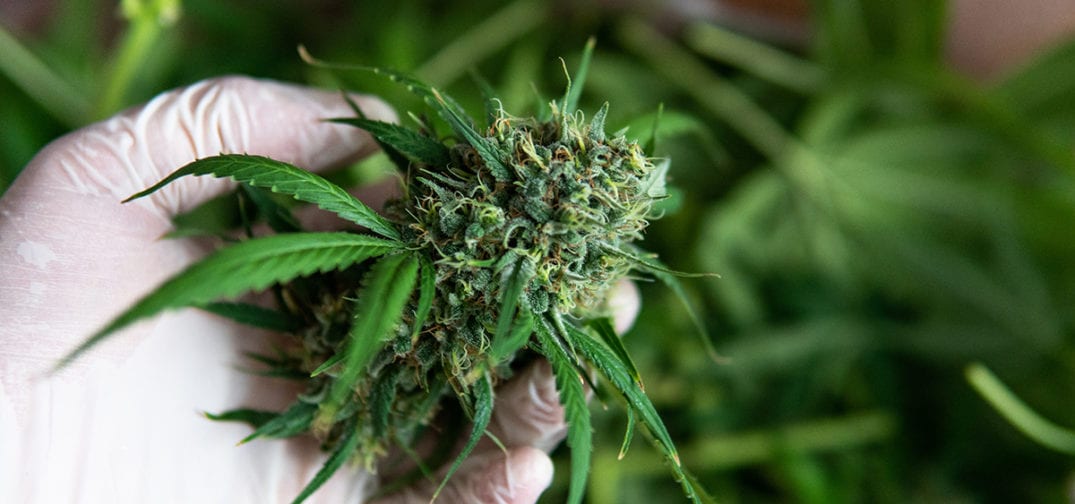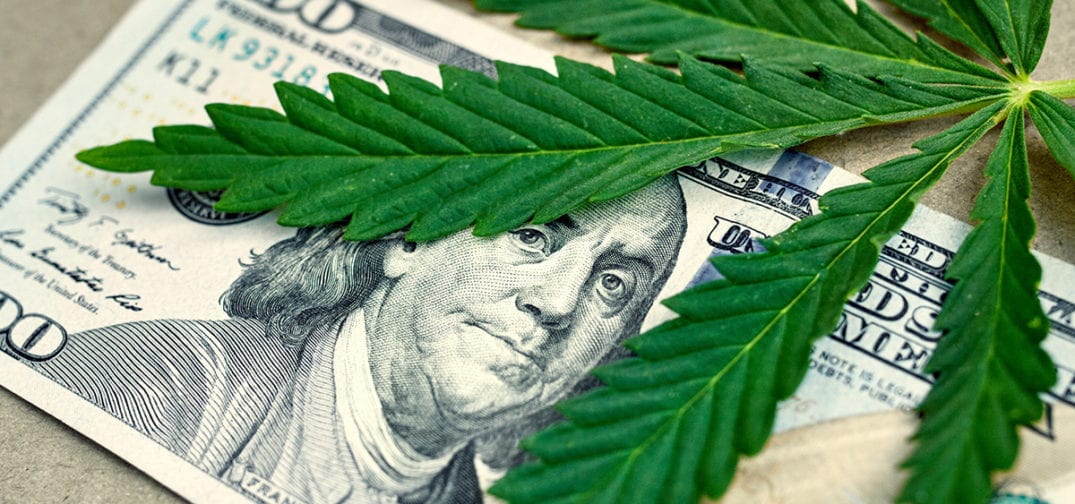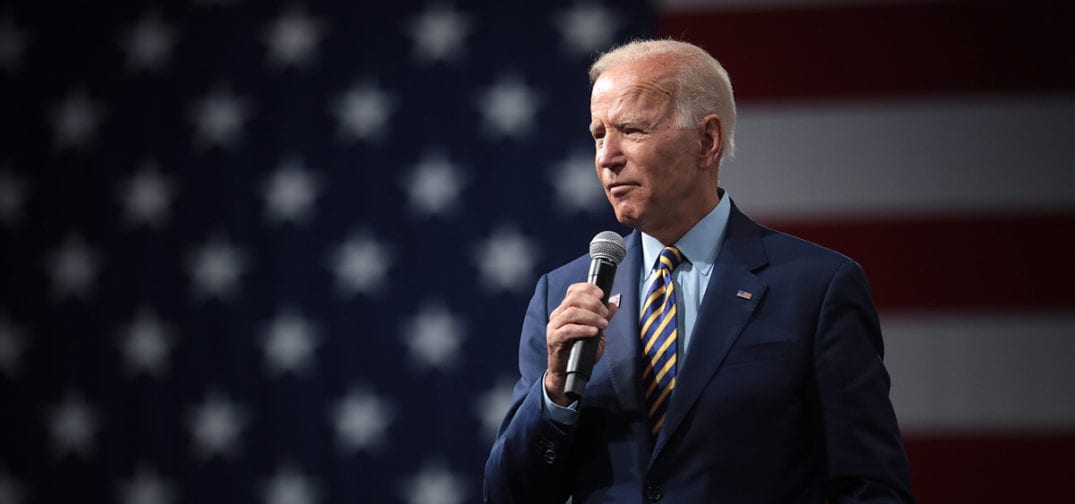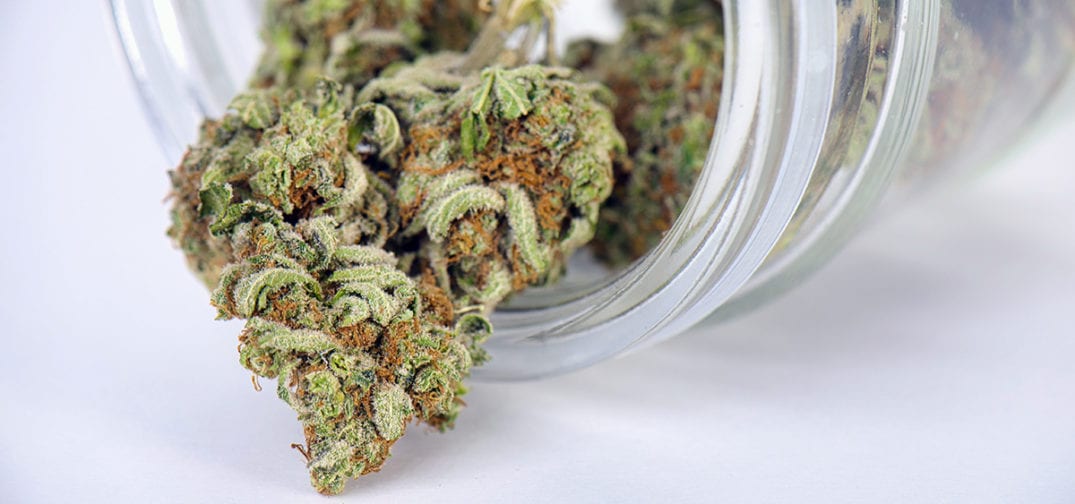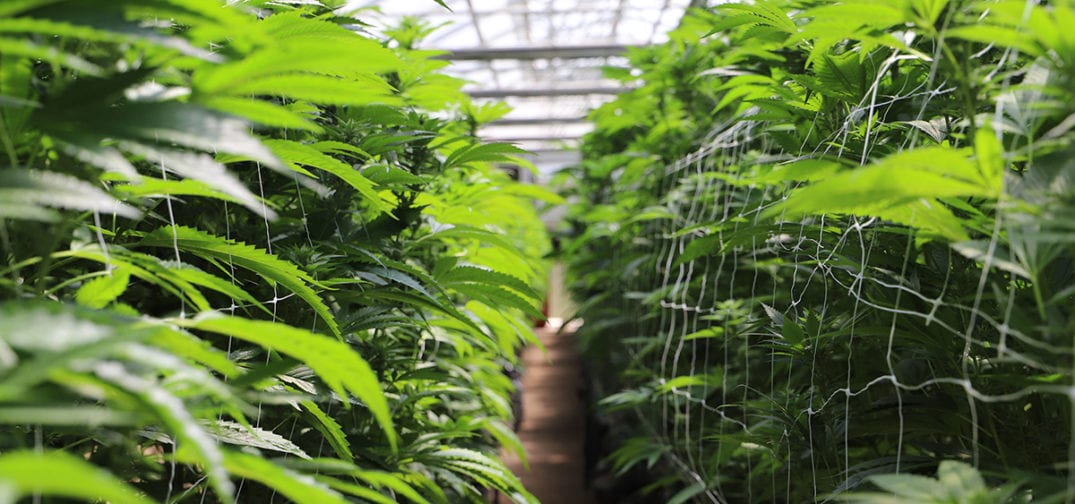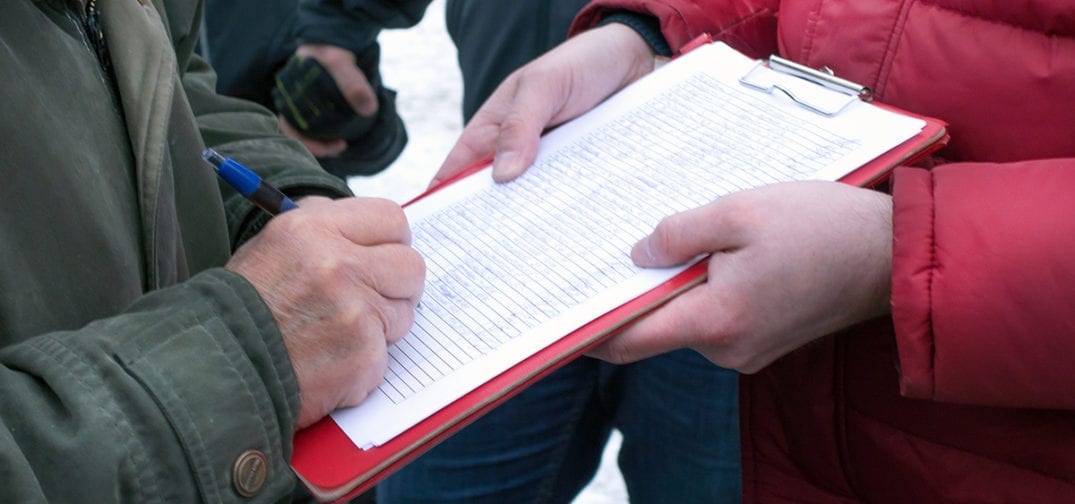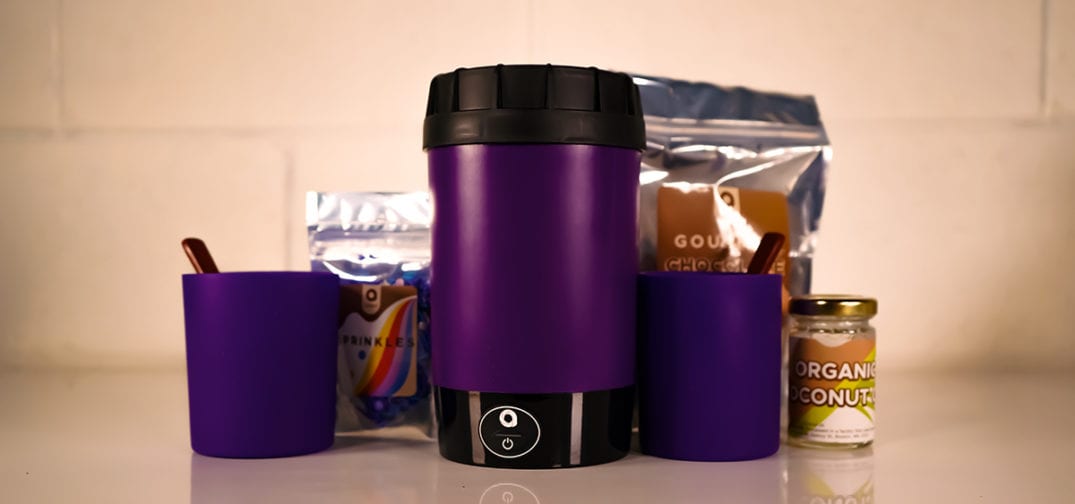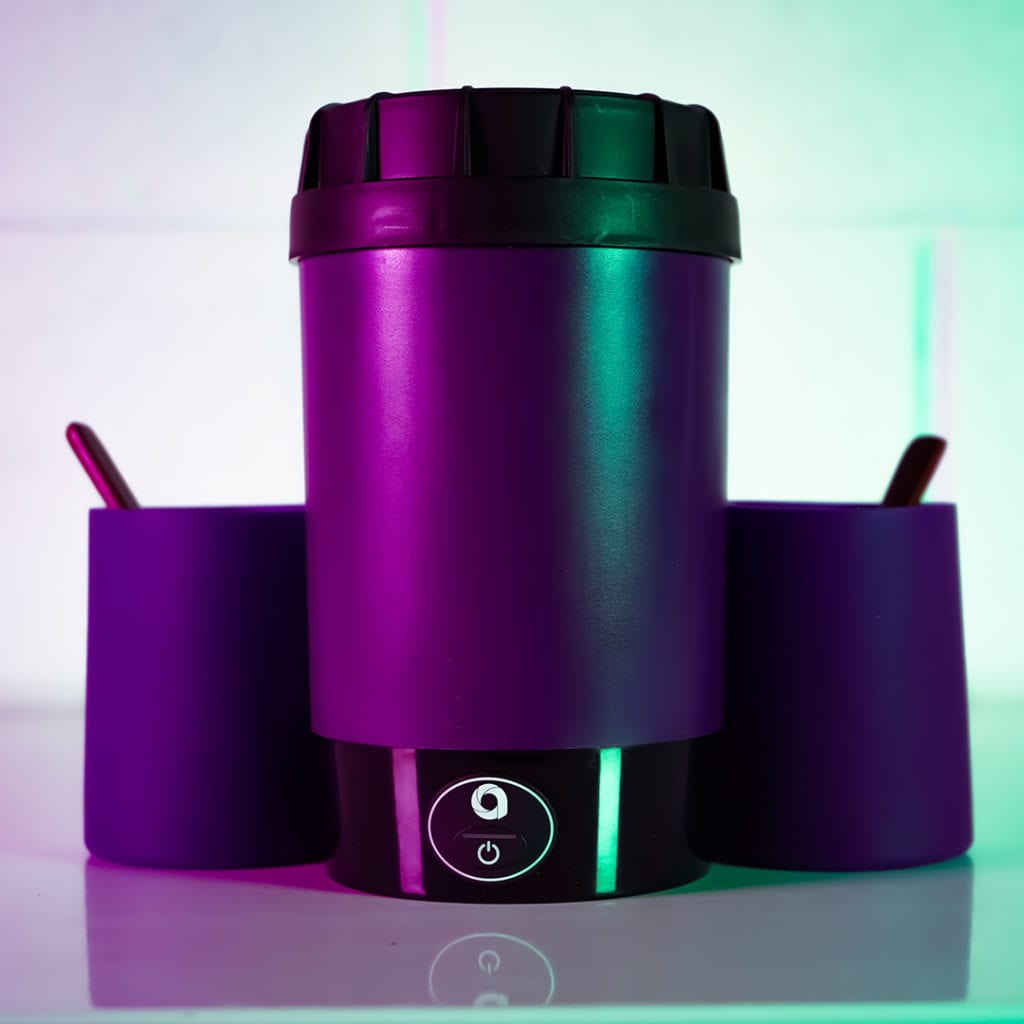Between regulations and the still-dwindling stigma from decades of prohibition, cannabis companies have an inherently tricky job when it comes to advertising and growing their customer base. In a recent interview, Jon Lowen of Surfside joined our podcast host TG Branfalt to discuss the nature of cannabis advertising, what differentiates cannabis marketing from other industries, and how they use primary data sets to identify and target new potential customers. Jon also describes what first drew him to the cannabis space, offers his advice for industry newcomers, and more!
Tune in below or through your favorite podcast media player. You can also scroll down to find a full transcript of this week’s episode of the Ganjapreneur.com Podcast.
Listen to the podcast:
Read the transcript:
TG Branfalt: Hey there. I’m your host TG Branfalt and thank you for listening to the Ganjapreneur.com Podcast, where we try to bring you actionable information and normalize cannabis through the stories of Ganjapreneurs, activists, and industry stakeholders.
Today I’m joined by Jon Lowen. He’s the co-founder of Surfside, a direct-to-consumer marketing firm, whose mission is to build an ecosystem of products that make consumer acquisition smarter, faster, and more engaging for modern brands. How are you doing this afternoon, Jon?
Jon Lowen: Doing great. How about you?
TG Branfalt: I’m good. I’m good. As many of my listeners know, I’m actually a media studies professor. I have a master’s degree in communications, which includes a lot of sort of marketing stuff. So, this sort of what you do is in my wheelhouse a bit, but before we get into what you do, tell me about yourself, your background, and how you ended up in the cannabis space.
Jon Lowen: Yeah, definitely. So I always thought that I would be a doctor and then I switched to thinking I’d be in banking. And then the banking industry fell out right around when I was coming out of school. And I ended up at an ad tech company where we were focused on buying and selling ad inventory for hunting and fishing websites, and we called it a hook and bullet. And so that was my kind of entry into ad tech.
And working at a small startup became kind of my MO and my interests and where I really saw kind of the ability to build companies and build products was really interesting to me. And so I’ve ever since kind of been in the ad tech space and working at small companies, helping them grow.
Our latest foray was after the ad network business came along and programmatic kind of made those businesses a little bit more difficult, we ended up starting a location-based mobile company. So using location data to find targeted or to better indicate intent. So ultimately how can someone’s movement patterns or location that is being passed from their cell phones help you better identify users from an advertising perspective?
And from there I met my co-founder and we started Surfside and the genesis of Surfside ultimately was how can we take things beyond location? So location was a great signal for us, as the places you go, the places you visit is, like I said, a great indicator of intent but we wanted to know more about the consumer. And so we wanted to be able to bring in purchase data and behavioral data and psychographic data.
And we found that a lot of the businesses that we were working with wanted to be able to better monetize or activate their customer data, the data that they readily had access to. They didn’t feel like they were getting the value out of it. And so our mission was ultimately to start a company where we could work directly with brands, retailers, medium to small sized businesses just as much as the Fortune 500 and be able to offer this suite of services so that they could better action and take advantage of their customer data to make better business and marketing decisions.
And cannabis came along as one of our first clients. We had a former board member at one of our companies who entered the cannabis space and was looking for an edge in the marketing and data collection. And we started working with this company who ultimately is an MSO now and we got really interested in this space and we saw that, oddly enough, that the marketing was kind of limited to ad networks, something that I had done early on in my career and had seen how that technology has progressed over time.
And we saw a really clear path for what we were building around consumer identity and the ability to be very granular with our targeting, using location data that really hit all kind of the boxes when we talk about fulfilling and maintaining compliance and helping cannabis companies actually advertise at the scale that they’ve been lacking and targeting the right consumers, rather than just targeting contextually relevant websites.
And so Surfside was born. Well, the tech was born and we kind of pivoted and started focusing really solely on the cannabis space to be able to prove out the efficacy of the technology that we had built or had been building.
TG Branfalt: So you mentioned that the space lacks a lot of that sort of that marketing ability that a lot of other, I guess, normalized industries do have. So why don’t you explain briefly some of the differences, both policy and sort of actual between marketing cannabis, right, hemp products and the ancillary businesses that serve the industry.
Jon Lowen: Yeah. I would say that like, as far as the lacking of technology, it’s not out of a function of the technology’s not there. It’s a function of the people who kind of control the reigns of that technology or that inventory are not interested in the risk of working or allowing those types of brands or advertisers to use their software or use or have access to their inventory.
And so the early days was very much finding inventory partners that were willing to accept CBD, THC advertisers or even the ancillary businesses. And so once you kind of solve for the inventory supply, which was kind of, having been in the industry and been working with these vendors and inventory suppliers for a long time, we kind of had a leg up as far as our ability to have a prior relationship with them and being trusted allies with these different companies.
And so that gave kind of an inroad to prove out that these are quality companies there. Everything is going to be compliant as it pertains to the different legislation at a state-by-state or local level. And once you kind of provide that confidence and that trust, a lot of technology and a lot of capabilities really open up to you and you can start using, and we start building out really differentiated tech, not only for cannabis but that’s actually differentiated in other verticals as well.
And we’re starting to see actually some really unique things happening in the vertical that, and when we talk to our partners and other software and vendors that we’re integrated with, how they might be looking at other verticals, because what they’re doing is unique because of the complexity. The complexity and the nature of this business has kind of born some really cool things and some cool technology that might bear fruits in other industries.
TG Branfalt: And you mentioned sort of the policy differences. You and I are both in New York where we have medical cannabis and there’s, as far as I can tell, there’s no advertising of cannabis businesses allowed. However, when you drive on the thruway going towards Massachusetts in Albany, you definitely see on the billboards advertisements for Canna Provisions, let’s say, for dispensaries over the border. So, there’s obviously a learning curve, right? How do you navigate the various marketing restrictions on cannabis from state to state?
Jon Lowen: Yeah, so the first thing is we kind of bucket compliance in three different categories, creative, placement, and targeting. So, and to kind of answer more directly, it’s for us, we have intimate knowledge of all the different policies. As things are changing, we’re getting notifications and updates and constantly managing like kind of legislation as it pertains to the marketing and what we can and cannot do or can and cannot say.
But back again on those three different categories, it’s making sure that the creative is compliant and making sure that when we’re delivering an ad, every operator is going to be licensed in specific states, so ensuring that those ads only are being delivered in areas where they’re licensed.
And then from kind of the targeting and placement perspective, placement I mean, I kind of discussed before. It’s ensuring that the inventory that you’re delivering is going to be over-indexing for 21 plus. There’s kind of different percentages that those sites need to obtain in order to be qualified as compliant.
And then for us, we find that people really don’t talk about is the fact that targeting is a little bit more unique and that solving for creative, being able to understand whether or not your designers are putting in the right messaging and not targeting certain, making certain health claims or targeting minors, a lot of that is very controllable in your hands as far as the design perspective and understanding where your ads are being placed. You also have pretty direct control over when you’re talking about specific billboards or buying different websites or mobile apps.
But when it comes to targeting, ensuring that your ads are being delivered in the proper location, maintaining them within state lines, and then being able to ensure that you’re not targeting schools or public transit shelters and other areas that are kind of blacklisted or not allowed as it pertains to the targeting aspect of the compliance regulations, that kind of stuff, it takes a little bit more know withal and a little bit more expertise as far as being able to understand fraud, location data, making sure that the data that you’re receiving is relevant and accurate and precise.
And that comes into our past experience in being able to be kind of one of the experts in the location data field to make sure that the targeting is just as important as the kind of things that you will do at the onset of a campaign before it launches.
TG Branfalt: So you talk about all this data that you use to drive these sort of campaigns. Where does that data actually come from? And of the probably swath of data that you get, what data are you looking for and how do you actually leverage that?
Jon Lowen: Yeah. So for us, we wanted to move beyond the standard kind of available information that kind of is licensed out or sold or something that might be a little bit more readily available to all players in this space. So for us, we wanted to be very in tune and have the most intelligent and the most complete data set as it pertains to the cannabis consumer.
And in order to do that, that meant integrating with companies and platforms and businesses that had really good relationship with the consumer and so purchase data at the consumer level. And we have a number of different partnerships with POS systems, eCommerce platforms, marketplace specific brands, websites, and et cetera. So that we understand there are these offline behaviors of the cannabis consumer and the online behaviors and we bridge that gap and tie it back to this all anonymized, privacy compliant, taking into account CCPA and PII and HIPAA, all these different regulations so that when someone comes to us and wants to understand not only people who maybe recently visited a dispensary, but maybe specifically, “I want to target people who have an average basket size of over $150 and are buying edibles in the California market.”
And so like categorizing people by product category consumption, method, symptoms that they’re looking to treat, all in a compliant fashion gives you this really granular way to build out these audiences. And by tying to these different purchase points, it makes it really easy for dispensaries and brands to utilize existing software that they’ve implemented and being able to activate these learnings and these insights for their own business and media purposes.
TG Branfalt: So is there any data that you have access to that you choose not to use for sort of marketing purposes and if so, why not? And if not, why?
Jon Lowen: So, there’s a number of current and incoming kind of privacy and consumer regulations that come into play. Like you look at CCPA, you look at like PHI, any of the HIPAA Act and anything that is considered medical record. All that data is not usable.
And so in order for us to be able to use certain information, we have to obtain the consent from consumers. We’re obtaining consent from the different platforms and the different dispensaries or brands that we’re using for. A lot of the times when we’re working with the dispensary and they’re providing us data, they want to use it for their purposes only, and it’s not going to get merged, or it’s not going to get utilized by their competitors is ultimately their biggest concern.
And for us, in order to scale our business and in order to help them, like we’re not trying to create a marketplace where a customer can come in and necessarily buy their competitor’s data when it’s not in the best interest of our clients, it’s not in the best interest for us to help grow their business. And so that type of data is not available or not used. And then there’s obviously all the regulations around how and when it’s appropriate to use certain data based on the specificity or the legality of it.
TG Branfalt: So, I mean, as you said at the top you’ve been in this sort of marketing industry and you started in a niche industry, hunting and fishing, that’s not sort of a mass industry.
Jon Lowen: Bigger than you think.
TG Branfalt: Well, as opposed to groceries. I mean, I live in the Adirondacks.
Jon Lowen: Yeah.
TG Branfalt: I know how big the industry is, right? But I think that what I’m trying to get at is how much has sort of the data points or the information that you have access to as a marketer changed as data has become, right, everyone has a cell phone, it’s become a much sort of bigger element, right?
Jon Lowen: Yeah, definitely. The phone, in general, like consumption of your digital behaviors are growing every year and they’re not slowing down. So by nature, there’s going to be much more information that all these companies are going to have on users. Like the unpopular kind of view is the Internet’s free and it’s ad supported. So, do you want the content and the internet to be free, you have to kind of allow them to advertise to you and accept ads. And what they do, some companies do a little bit more with your data than others, and it’s kind of a gray area and that’s where you start seeing some of the CCPA come into play. We’re fully prepared and fully believe in kind of those consumer rights, as well.
But when it comes down to the different advances like mobile, like you discussed, that phone’s with you at all times. And there’s a number of different apps on that phone that are pinging for location and submitting and aggregating that to better serve you ads.
And in addition to that, cannabis is really unique in that every purchase, more often than not, requires you to provide your license and provide information, more information than you normally do at the point of purchase. So it allows for this ability to create a better graph or better understanding of who the customer is. And from a dispensary’s perspective, this is really valuable because, and even from a brand perspective, is that because you can start personalizing and building product geared towards the interests and what your customers are valuing.
And so you can start creating better user experiences. You can start creating better pricing structures and better products, but ultimately keep your customers coming back to your brand or to your dispensary. So it’s not all about kind of the targeting and the marketing aspect of it. It’s more about like, how can this data set and this information also help with brand and product development.
TG Branfalt: When you talk to dispensary owners or business owners, how frustrating, or is it frustrating for them sort of the rules that are in place as part of regulations? I mean, do they understand them or is it sort of one of those, like, “I can’t believe that we don’t have access to sort of traditional services.”
Jon Lowen: I think that, and I think that even like in March, March and April, we’ve seen that there’s pretty heavy swings and trends in the industry and demand fluctuates. And to date there hasn’t been a huge like, “Oh man, I really wish we had these different technologies or capabilities.”
I think that it’s coming to a point where more so now that we are beginning to see a lot of companies in this space trying to differentiate their marketing and get access to these new different technologies in order to expand their user base and to start being able to move away from the email marketing and the SMS, like the loyalty programs and the retention strategies that existed.
TG Branfalt: Okay.
Jon Lowen: So, it’s definitely been a bigger push we’ve noticed in the last six months to get into this customer acquisition. And even specifically with COVID the brands who primarily were using budtenders and dispensaries to educate and inform and reach consumers, they now with that kind of in-store pickup not being as required as it used to be and you start having states with delivery and curbside pickup, the brands are now realizing that it’s necessary to own that consumer relationship. And so being able to communicate directly with the consumer and handle that education is now a big push for them and using these different technologies is going to be key to that.
TG Branfalt: So I want to talk to you sort of about Facebook real quick. It’s the largest social network. Virtually everyone has a Facebook account and recently they updated their policies to allow for quote, “Verified cannabis companies to advertise,” sort of simple advertising. Have those, in your sort of expert opinion, have those guidelines that they’ve sort of offered for these verified cannabis companies, have those been effective to sort of changing the playing field a bit and how can a company best utilize that platform if they choose to use social media as a marketing media?
Jon Lowen: Yeah. So Facebook, Google, obviously the biggest, the most common question we get, we personally don’t manage those. If someone’s running SEO or running social campaigns, we personally don’t manage those campaigns or those tactics for them. More often than not, that’s handled internally or like a specialist group.
So, for us, our involvement, I always recommend it. Ultimately, you want to have a full funnel and a full media mix when it comes to your exposure and reaching clients. And if people are spending time on Facebook and Instagram or certain properties, then you want to be where they’re spending their time. For us, if they’re spending 50% of their time on Facebook and 50% of their time on every other app or website, that’s kind of the split between where we would execute on everywhere else.
And then there’s companies, and we manage a couple of Facebook campaigns that primary to us are core to our capabilities. But when we do, we’ve always known that these are going to start opening up and these are going to be channels that dollars are going to flow to. It’s just natural and it’s inevitable.
And so when we started the business, it wasn’t that we wanted to create a product or create a solution to compete with Facebook. We wanted to create a product and a solution that worked with them. And so how can we work with all media providers and all websites and all different kind of what we would call end points or destinations for where media can be delivered.
And that was around our concept of knowing the cannabis consumer so that when you go into Facebook and you run a campaign, you can start utilizing these audiences or these insights to better reach the known consumer.
So if you go into Facebook, they’re not going to necessarily have an audience that are an interest group for you that’s California edible buyers. And so having either your first party data or allowing us to help you activate that data in the platform for you, gives people more of a targeted audience rather than reaching the billions of people on Facebook. They can sub-segment and create more specific and relevant targeted campaigns through connections and platforms like Surfside.
TG Branfalt: So, you’re sort of the key holder to some questions that I do have about sort of that average cannabis consumer that you keep referring to. Is it people 18? Well, I mean, it would be 21 to 36 white male, is that demographic as is much purported?
Jon Lowen: So off the top of my head, I don’t have an answer on the specifics of like who is the cannabis consumer. What I would say is that when you look at demographic data in general, it’s important to look at it normalized or indexed against the average consumer.
And so if an audience or any population is going to be larger than in turn, like for instance, people always ask me, “Is the data sets that you have, is it primarily California?” Well, it’s not primarily California, but we have a lot more data than any other state in California, just because that’s where most of the sales are. That’s the biggest market.
And so if white males tend to be a very large proportion or percentage of the US then naturally you’re going to have a large proportion of that audience potentially as a segment in this business. But ultimately looking at how does that sample size, or how does that population index against the average consumer in the US is the way that we always like to look at things. And so how is your audience in California different than Massachusetts? Or how is your company, how is your business selling against certain demographics on a state-by-state or local level? We’ll always look at it against the baseline so you can really understand proportions versus indices.
TG Branfalt: Very fascinating stuff. It’s really, really great sort of explanation insight there. And then the other question, and you don’t have the demographics in front of you, but is flower still king? I mean, we read it all the time that flower concentrates are still about a third of sales in most states. Is flower still sort of king, I guess?
Jon Lowen: Yeah. So, actually kind of two points on that, ultimately is at Surfside we’re more focused on differentiating ourselves from kind of like the BDS Analytics or the Headsets of the world, as it pertains to kind of being like a market research company.
TG Branfalt: Okay.
Jon Lowen: For us, it’s about how can we help businesses manage and get the best use out of their data. So working with companies like that to turn it into consumer insights or providing other consumer behaviors tied to research reports or other information they may have. So, that’s why we don’t put out trend reports like a lot of these companies do, but as far as what we continue to see, flower is still a really big category. And there tends to be kind of some patterns emerging as the markets in each individual region or state mature and you start seeing like maybe people start in certain categories and then certain categories will grow over time as people begin to experiment with their preferred method of ingestion.
And so for us, what’s really interesting is being able to see those trends. Like if we’re seeing in Colorado, in a more developed state, that when flower used to be X percentage, and then over time, the beverage market is growing. Or like we’ve seen a lot of dissolvables come onto the marketplace. And so if that’s going to be a function of growth, like how do we take that information and understand the consumer? Like at what point in time, how many purchases, how many visits since they became a cannabis end market consumer does it take for them to move to these different product categories? Because then we can start using that information in order to properly market.
So, two dissolvables that comes to mind is you have like Caliper, that’s Stillwater and then like Chill. And at what point in time can we start taking data from California and understanding who that audience is? And then as someone goes into California or goes into Michigan, how do we use that understanding of that consumer to be able to build lookalikes and models, to be able to say, “All right, well, now this flower, this edible consumer is likely to be transitioning into exploring other forms of ingestion, and we should start serving them the dissolvable products now or the packets, powders.”
TG Branfalt: You’re a fortune teller.
Jon Lowen: We try.
TG Branfalt: In your opinion, we all get, so let me backtrack a little bit. I mean, we all get marketing emails, right? We all get SMS marketing, right? It’s sort of a bombarding thing. We’ve spam folders full of emails from any place we’ve ever bought anything in the last 10 years. And it gets inundating, right? So, in your opinion, what are the best practices for cannabis marketing to consumers without sort of the negativity that I think ends up spawning for everybody over time of the sort of inundation?
Jon Lowen: I mean, the first thing I would say is ultimately, I always say follow the numbers. So if you’re seeing drop off rates, if you’re seeing unsubscribes, it’s not necessarily about the open rates. More often, there was a stat that 99.99% of people are opening your SMS, but are they doing anything with it? Back when SMS and MMS messaging started, you were forced to open it to delete it.
TG Branfalt: Yeah.
Jon Lowen: So, it’s kind of an interesting step. But ultimately looking at those secondary metrics, are they driving sales? Are they driving visitation? So, don’t continue to do something that isn’t working and making sure you have that measurement and those metrics set up so you’re able to drive intelligent decisions, make those data driven decisions.
But then at the same time, a lot of these approaches if you put yourself in their shoes, you look at what’s logical, how would you want to be marketed to? And more often than not just having that kind of approach to things in conjunction with trusting the numbers and trusting what’s working is generally what we recommend. It’s don’t do something that would annoy you.
TG Branfalt: What sort of advice would you have for people who are just getting into the industry? I think they don’t have sort of that data that a company, a dispensary that’s been around for X number of years. What would you say to them, the sort of person who’s just entering to help them in their marketing journey, which is, I mean, just by this conversation, I mean, it’s very complex. It’s not just, “Here’s the ad,” right?
Jon Lowen: Yeah. We like to make sure. It’s like a iceberg or a duck. They look really calm on top, but there’s a lot going on underneath. For us, it’s we want to keep things as simple as possible and we’re able to, all of this data and all this information is what we use internally to make a brand or dispensary’s life super simple.
And so there’s different services available. As far as what I would recommend, it’s test, ask questions, don’t be afraid. Ultimately, obviously in my biased opinion is spend. You’ve got to spend a little in order to understand what works and what doesn’t. And then be quick. Be quick to make decisions. It’s be quick to make decisions, but ultimately understand that if marketing was a surefire way to success then everyone in the space would be printing money.
So, you have to iterate, you have to continue to trust the process and work. We recommend working with different vendors and working across different channels and experimenting. You still have to go out there and be present and communicate. It’s like other biz dev efforts as well. It’s not, you can’t just do one, can’t just have a website and hope people show up to it.
You’ve got to have some type of outreach and some type of methods. And the more channels and the more presence you have, ultimately, the more touch points with the consumer, it’s the more likelihood that those consumers are going to convert.
And making sure that you have a structure in place where you’re able to identify what’s working and what’s not is kind of our MO and that we want to ensure that you understand that every time that you communicate with a consumer that’s an influence point. And so we want to make sure that we understand what is that path to purchase. So even if you’ve got a website, if you’ve got a listing on Google or a social, you’re doing your tweeting, or you have an Instagram page or a Facebook page, every different touch point counts.
And even when you start adding in your billboards and your prints, and you’re doing events or conferences, there’s ways to measure the effects and the effectiveness of these different marketing components. So the more you can measure and the more you’re able to understand what’s working, what’s not working, ultimately the better decisions you can make. And relying on trusted and experienced companies will only make that easier for everyone.
TG Branfalt: And then finally, I just want to ask you just sort of by your background and you’re a reasonably young guy, I reckon, just by pictures and the sound of your voice, what was the biggest challenge for you entering this industry and getting to understand the sort of nuances because it’s got to be a pretty different sort of gig than you’ve done in the past?
Jon Lowen: Yeah. I mean, it’s not as complex or our last company. This is our third or fourth startup at this point, depending on how you look at it. We’ve had some startups sold into other startups and I count those as separate startups, but everything’s complex in its own way no matter what you’re running. Excuse me. We’re running into different issues. Like when it was hunting and fishing, you can’t advertise ammo and guns very easily. So dealing with compliance and dealing with these types of issues is maybe I’m drawn to them, these complex issues.
Google still, I don’t think, accepts any advertisements for guns and ammo so finding destinations and places where you can deliver those ads was very similar to what we had to do to start this business. And then when it’s location data, location data is like a hot topic right now and the usage of it and how it should be used in consumer privacy. And you have GDPR that started in Europe and CCPA in California and more regulation is coming. So there’s so much to me like when people ask that question, it’s not the first time we’ve got it.
But ultimately cannabis, I don’t really see to be as complex as HIPAA or CCPA or GDPR. When you’re trying to find the consumer when you’ve got access to billions of inventory and 240 million legal age consumers in the US and an infinite amount of creative possibilities to message them, making that right combination is the tough decision. Navigating the states and the handful of different regulations that each state has is albeit potentially manual. I know there’s companies that are trying to automate this process in a more technological way, but it’s not necessarily like our biggest issue right now.
It’s kind of, what we say is compliance is a requirement, not a feature. And so we want to make sure compliance is a standard. As legal as it is, it’s a legal requirement. So we’re going to make sure that everything’s compliant, but then it doesn’t equate to performance. And so we want to ensure that the performance is actually there and that’s where it gets difficult, guaranteeing performance and driving sales and visitation. That’s the biggest challenge for us.
TG Branfalt: Man. This is really, really interesting insight, man. And I really appreciate you coming on the show to really, I mean, dig into some of these issues. Where can people find out more about you, find out more about Surfside and your suite of offerings?
Jon Lowen: Yeah. So website’s surfside.io is kind of the best place to reach us. You could always email us, reach us at Twitter or LinkedIn. We’re very available. One of the things we pride ourselves on is my email’s jon@surfside.io. If you ever need anything, just email me direct or shoot me a call. We’re happy to connect and talk about the industry and the business and consult, just shoot the shit. So, we’re good either way.
TG Branfalt: That’s Jon Lowen, he’s the co-founder of Surfside, a direct-to-consumer marketing firm whose mission is to build an ecosystem of products that make consumer acquisition smarter, faster, and more engaging for modern brands. Thank you so much for taking the time to come on the Ganjapreneur.com Podcast, man.
Jon Lowen: Thank you. I appreciate for having me.
TG Branfalt: You can find more episodes of the Ganjapreneur.com Podcast in the podcast section of Ganjapreneur.com and the Apple iTunes store. On the Ganjapreneur.com website, you’ll find the latest cannabis news and cannabis jobs updated daily along with transcripts of this podcast. You can also download the Ganjapreneur.com app in iTunes and Google Play. This episode was engineered by Trim Media House. Find us on Spotify at Ganjapreneur Podcast. I’ve been your host, TG Branfalt.
